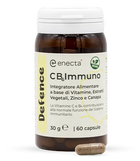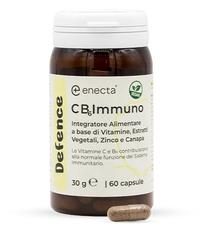CBD oil for pain relief - live pain-free using the power of plants
This might help you:

Definition - What is pain?

Causes of pain
Pain symptoms

Pain diagnosis
CBD for pain management

Benefits of CBD oil for pain management

How to take CBD oil for pain
CBD oil for pain dosage

Side effects of CBD oil for pain
Testimonials and studies on CBD oil for pain
Especially people with chronic pain report that they could achieve excellent results using CBD oil or CBD capsules. One reads that CBD also helps with menstrual pain, migraine, and joint pain. According to users, the dosage is the most important factor - in the case of severe pain, a comparatively high amount of CBD is required to achieve the desired effect.
People with severe pain tend to take medicine and use CBD as a supplement, and in some cases, they could significantly lower the dosage of painkillers. Whether you want to keep chronic back pain, migraine, or inflammatory pain at bay: CBD can help! The role of cannabis in pain management has been the subject of numerous studies that showed how helpful this plant can be.
Many studies stress the potential of hemp oil for neuropathic pain. Moreover, cannabidiol might be particularly useful in managing peripheral neuropathic pain, which is often a consequence of chemotherapy. Pain might also lead to insomnia, depression, and anxiety. By interacting with serotonergic receptors, CBD can support the body's reaction to these disorders.
CBD can not only increase general well-being, but it is also said to lighten the mood and boost the immune system - all without THC. In addition to interacting with serotonin, CBD might also establish a connection with adenosine receptors, which are involved in the transmission of pain messages. CBD is also recommended to manage inflammatory pain. In fact, CBD can support the body's reaction to inflammation and thus help prevent many inflammatory disorders from worsening.
A study conducted by the university "Università degli Studi dell'Insubria", showed that cannabis extract and CBD can inhibit the production of cytokines, molecules responsible for inflammation. Cannabidiol can also influence the production and secretion of anandamide, a cannabinoid made by our body, which plays a role in pain perception. Research has shown that CBD is safe and well-tolerated.
A study published in the Journal of Pain on the long-term safety of medical cannabis in patients with chronic pain underlined that CBD has hardly any side effects. The potential of CBD is not limited to chronic, neuropathic, and inflammatory pain. This active ingredient is believed to help with disorders that can be treated only to a certain degree with conventional medicines (e.g., multiple sclerosis, epilepsy, insomnia, and schizophrenia).





























